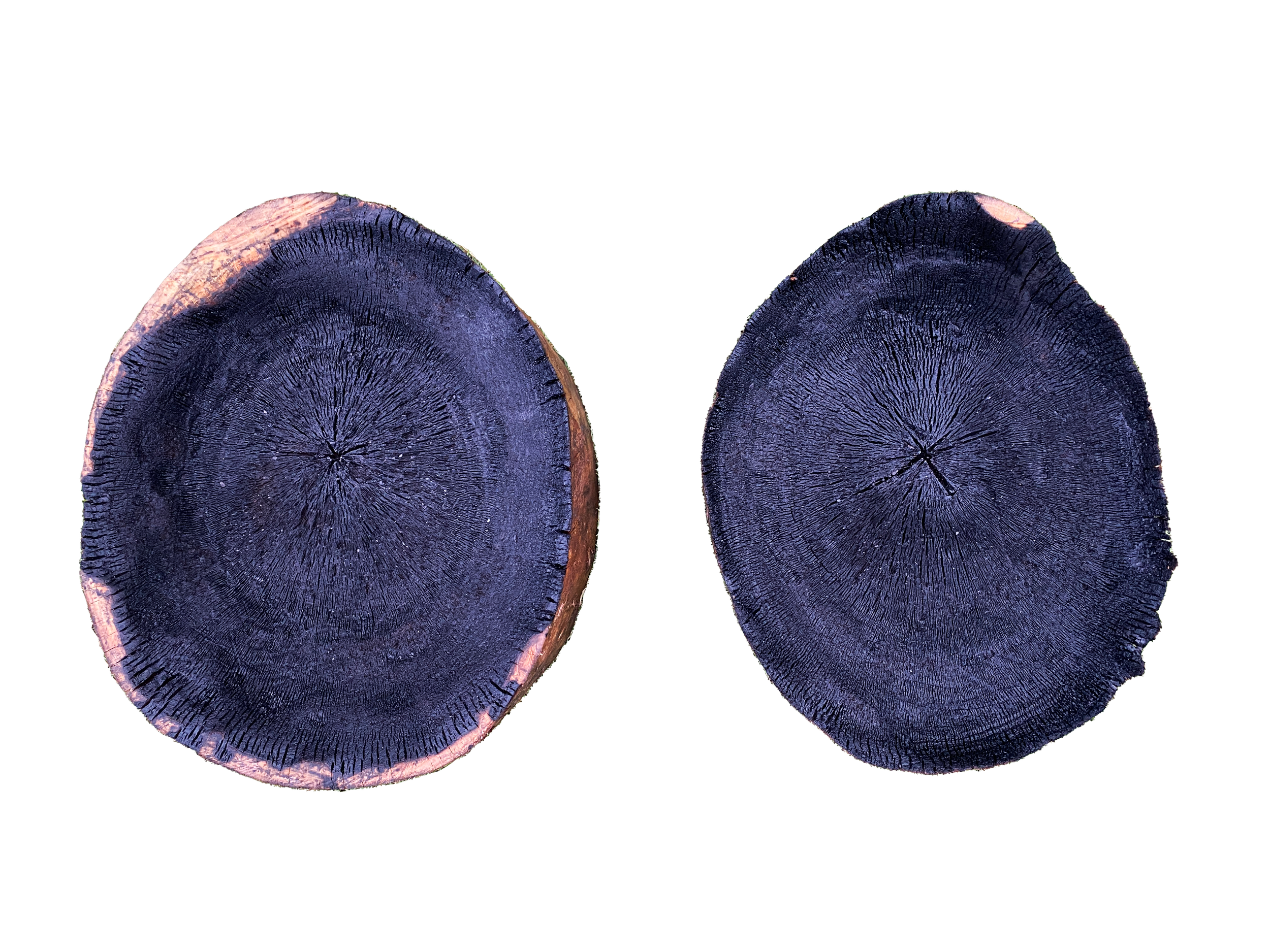
Born from Burning
Cutting down a living tree is seen as a radical act, an aggression towards nature, a nonsensical dismissal of critical carbon consumers. There is the assumption that nature is all knowing and that we humans are not a part of nature. Let us push back against this, putting human and tree eye to eye, situation ourselves on a 1:1 scale. Standing across from one another, we see similarities. Limbs, scars, histories, neighborhoods, and families. We are more alike than we realize and should embrace reliance upon one another.
MIT Workshop, Warm Wood
Thermal Relationships w/ Radiant Wood
Taught by Sheila Kennedy
2022
Present forestry practices focus on the standard and marketable, producing irregular remains with few plans on what role they can play in the dynamic relationship of humanity and woodlands. Trimming of logs leaves chunks of trunks, split by axe and well suited for fire. What if we don’t split our logs for firewood, but rather burn their cores? The heartwood of the stumps are scored in a radial pattern and piled with sawdust. With the strike of a match, a fire begins to burn.
For nearly one million years life has been warmed and nourished by the flames of burning wood. Climates and geographies were made habitable, bounds of nutritional consumption were expanded, and material transformations made possible.
The carbon of wood and they oxygen in the air join producing enough heat to enable hardening, fusing, and sintering ceramics. Burning wood gives permanence to clay while sacrificing its own bodily form. The erasure of wood through burning is a subtractive process, a method of excavation that engages heat, experience, and loss as method of formation.
The heat chars and erodes away the log’s core, excavating a concavity. Fire and fuel author the form and space that is created through removal. The form of loss is captured in clay; The melding of these two materials is timeless, and this work is a celebration of their pairing with human experience.








